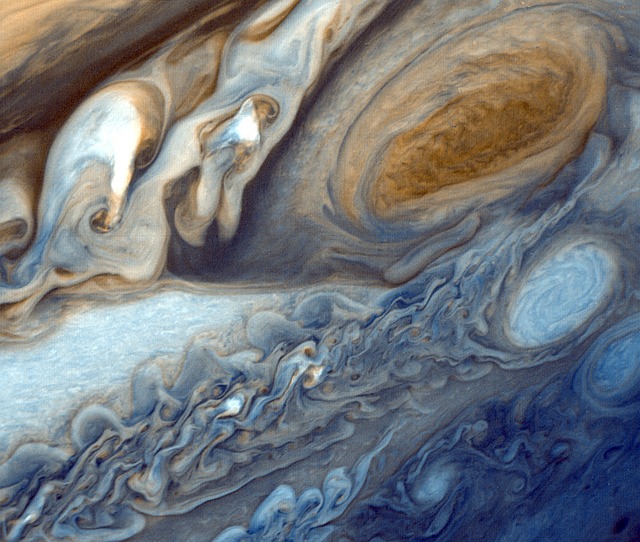For the first time, scientists are about to take an actual closer look at Jupiter’s famous Great Red Spot.
Well-known because of its unusual appearance on the surface of the solar system’s largest planet, the Great Red Spot is a giant storm that has been going on for centuries. It’s so massive that it’s even larger than the Earth in diameter, NPR reports.
NASA’s Juno spacecraft is scheduled to pass directly over the spot after 10 p.m. ET on Monday, July 10, some 5,600 miles above Jupiter’s cloud tops. This is more up-close and personal than any other spacecraft has been before.
Scott Bolton of the Southwest Research Institute in San Antonio and principal scientist for NASA’s Juno mission, says,
It’s lasted a really long time. No scientists really understand exactly how that storm is created or why it could last so long.
Juno’s camera is expected to capture detailed images of the spot, and the craft also carries scientific instruments that can probe into Jupiter’s storm. A microwave radiometer, for example, can look through the clouds to check on the kind of atmosphere that is swirling around the spot.
“It’s possible that the roots are quite deep,” Bolton says. “So we’ll be able to take a look at that and see what’s underneath the cloud tops.”
Along with the Juno probe, Bolton and his colleagues intend to use many other resources available here. These include ground-based telescopes, telescopes orbiting the Earth, even amateur astronomers who have telescopes will be helping to measure Jupiter when Juno gets to the spot.
Once every 53 days, Juno’s orbit takes it close to the giant planet, so scientists are hopeful that the probe will be able to provide more information with each flyby. Each time Juno passes, scientists will focus on a different instrument.
Juno’s main antenna will be pointed away from Earth when it approaches the spot, so it will take a few days for the data and images to be beamed back. Bolton is confident that the images will not disappoint. “Jupiter is stunning when you get near it,” he says.
























